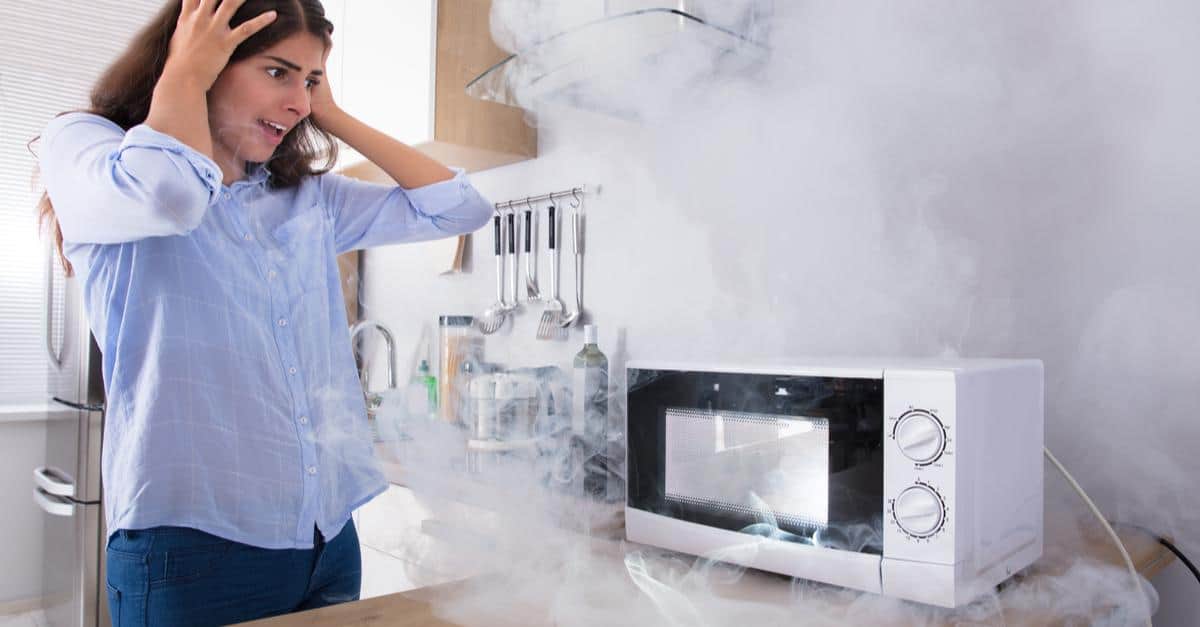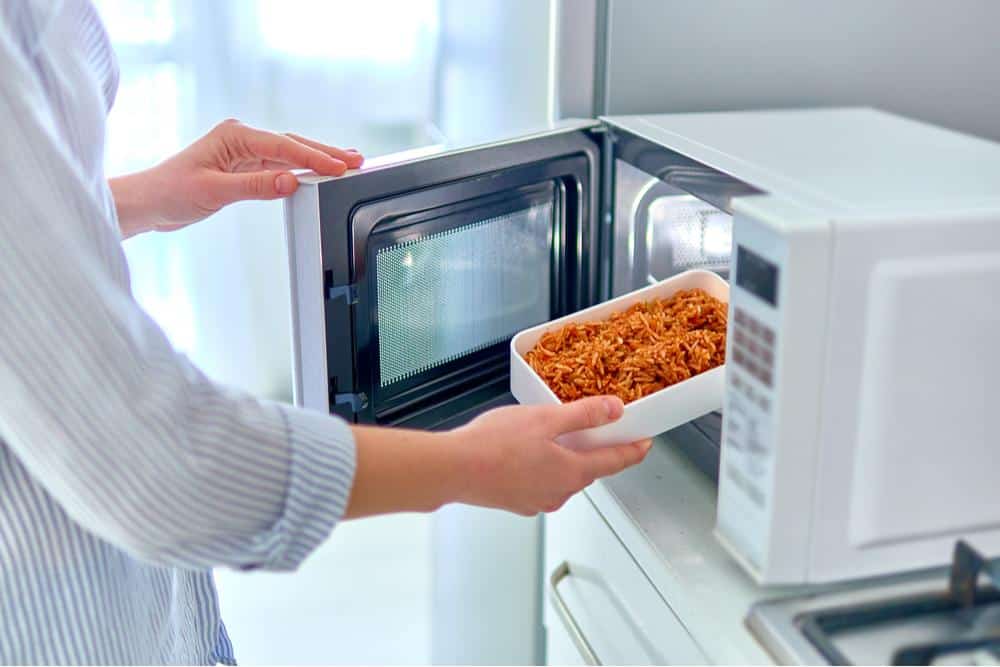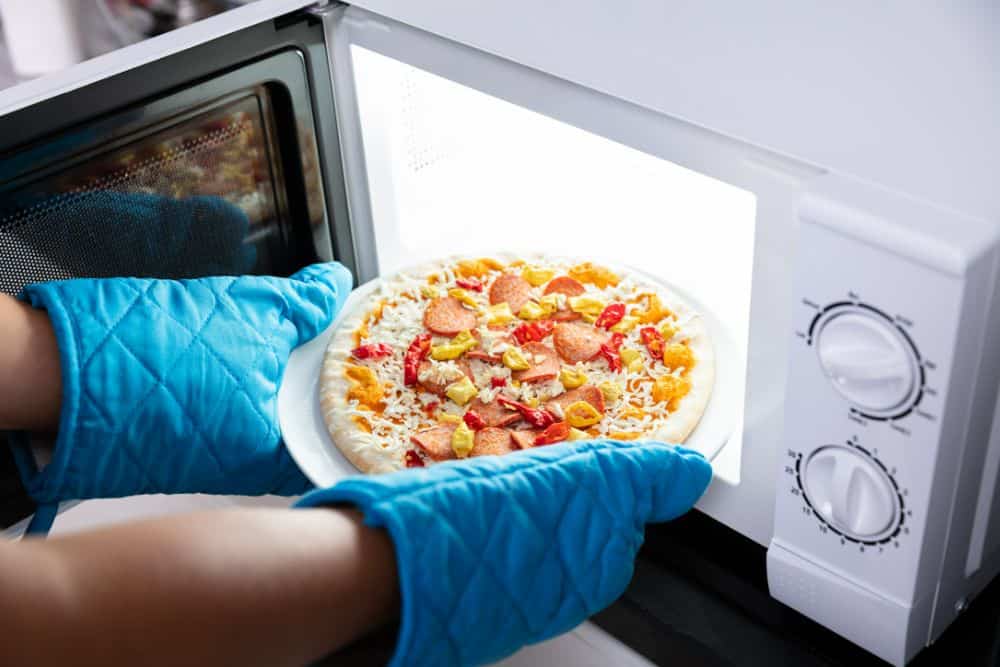Microwaves are one of the most convenient household appliances. They can heat anything in just a few minutes and save you the hassle of preheating your oven.
The best aspect of microwaves is how quickly they get the job done. It saves you time, and you get to eat faster. What’s there not to like?
Microwaves are capable of doing much more than just warming up leftovers. If you want to cook something more complicated, you will need to know how hot does it get in a microwave.
This article has all the knowledge you need to be a microwave expert and know exactly how hot it gets in a microwave.
What you typically refer to as a microwave is called a microwave oven. A microwave oven is a kitchen appliance that uses electricity.
This kitchen appliance uses microwaves to heat food. Microwave ovens are very popular because they cook food quickly and efficiently.
Microwaves are a common kitchen appliance, and they are often used to reheat cooked food or to defrost frozen food rapidly. They are also effective at heating or warming foods that could take a long time to cook, like butter, fats, soup, or oatmeal.
It would take much longer to cook these foods on a stove than in a microwave.
Even though they are called microwave ovens, they are not the same as a regular oven. Conventional ovens will brown or caramelize the food placed inside of them. A microwave oven cannot do this.
A microwave cooks or warms up food by releasing electromagnetic radiation of the microwave frequency. Instead of a traditional heating element that is used in conventional cooking (like an oven), a microwave oven contains a magnetron.
The magnetron is an electron tube that produces microwaves that contain this microwave radiation which results in the microwave heating of food that is placed in the microwave oven.
How a Microwave Actually Works
The microwaves are then sent into the cooking chamber, bouncing around until the microwaved object absorbs them. The microwaves vibrate the water molecules and produce heat.
The more water content your food item has, the more amenable the food will be to getting hot.
The waves can penetrate deeply into microwaved food, resulting in microwave energy heating up food quickly.
The microwave radiation released inside a microwave oven cause the polar or charged molecules in the food to move around and produce thermal (heat) energy.
This process is known as dielectric heating. Polar molecules are easy to move, so this is why microwaves are effective at heating food quickly.
Water is a polar molecule, which is why foods with a high water content warm up too quickly in a microwave due to the dielectric properties of water.
It can Acutally Be Quite Dangerous to Overheat Water in the Microwave - Especially if You Exceed 212 Degrees Fahrenheit (the Boiling Point of Water at Sea Level)
Note that this process isn't always perfectly distributed throughout the microwave and can result in uneven heating with food sometimes having "hot spots". The use of a turntable in many microwaves allows heat to be more evenly distributed throughout the food item to combat the problem of uneven cooking.

A Flatbed Microwave Doesn't Have a Turntable - Making Cleanup Much Easier After Messy Microwave Accidents
In recent years, the emergence of the flatbed microwave is able to evenly cook food without the need for a turntable. This makes cleaning your microwave much easier than trying to work in an around the mess that accumulates around the turntable plate.

Photo of a man removing prepackaged food from a microwave oven
A microwave is an electromagnetic wave with a frequency between 300 MHz and 300 GHz, corresponding to wavelengths between 0.001 m and 0.01 m. The name comes from microwaves that were first used in World War II for radar signals, which can penetrate fog and clouds.
After the war, microwaves were used in communications. In the 1950s, Percy Spencer, an engineer working for Raytheon, discovered that microwaves could be used to cook food when he noticed that a candy bar in his pocket had melted.
Spencer's experience with the melted candy bar led to the development of the first microwave ovens.
The highest temperature a microwave is capable of reaching is a tricky question to answer. A microwave oven does not get hot like a conventional oven. Conventional ovens measure their temperature in degrees Fahrenheit, while a microwave oven measures its temperature in wattage. 
Photo of a smoking microwave
It is imperative to know the wattage of your microwave. The wattage on your microwave is similar to the temperature of a conventional oven.
The higher the wattage, the larger amount of energy the microwave will put into the food and the faster it will cook.
Most microwaves come in wattages between 700 - 1200 watts. Many microwaves will let you select the wattage being used. Many people do not know the wattage of their microwave.
Not knowing the wattage is similar to not knowing how hot it gets in a microwave. This is essential information to know.
You can find the wattage of your microwave in the manual, on the box, or somewhere on the microwave. It is usually written on the door, the back of the microwave, or the bottom.
Microwave cooking instructions assume that a microwave is 700 watts. If your microwave is larger than 700 watts, then you should reduce the cooking time by 10% for every 100 watts your microwave is over the average of 700.
For example, if your microwave is 1,000 watts, you would decrease the cooking time by 30%. 
Heat in the microwave is from the warm food that is placed inside of your microwave
For example, say you want to cook a potato in the microwave. A small potato of about five ounces will take two minutes to cook at 700 watts.
A larger potato, about 12 ounces, will take four minutes to cook at 700 watts. But, if using a 1000 watt microwave, you cook the small potato at 1000 watts, it will only take one minute and 15 seconds to cook.
So how hot does a microwave get? It is dependent on the wattage of your microwave and the food that you're cooking.
As you can see, the wattage of your microwave plays a significant role in how hot it can get in a microwave. The microwave heat warms up your food which in turns raises the internal microwave temperature.
If your microwave has multiple wattage settings, you can adjust how hot it gets in a microwave when cooking different kinds of food. Here are some standard wattage settings on microwaves and how they work:
You can correlate the higher wattage of a microwave with increased temperature in a conventional oven. A 700-watt microwave is like cooking something in a 350-degree oven.
An 800-watt microwave is like cooking something in a 450-degree oven. A 900-watt microwave is like cooking something in a 525-degree oven.

The Heat in a Microwave is From the Water Content in the Food Being Heated Up and Releasing Heat Into the Inside of the Microwave
Finally, an 1100-watt microwave is like cooking something in a 625-degree oven.
Based on the increase in maximum temperature. It is easy to see why larger microwaves cook things faster. The higher the microwave wattage, the faster it will cook your food.
It is important to remember this if you want to avoid burning your popcorn.
In addition to knowing how hot it does get in a microwave and the wattage of your microwave, there are other helpful tips to know about cooking with a microwave.
It is actually the heating up of the food that is responsible for also warming the inside of your microwave. Check out our related article on why your microwave gets hot on the inside.
Now that you know “how hot does a microwave get?”, you might be wondering what to do if a microwave gets too hot. Thankfully, microwaves have built-in safety features that will keep you safe.
An overheated microwave shouldn't be an issue as long as the safety features are still working. Look at the owner's manual to learn more about the safety features of your microwave.

Before Putting a Container or Plate in the Microwave, Make Sure That the Plate is Microwave Safe - Often Times You'll see an Icon on the Bottom of a Container Indicating that it is safe for Microwave Use
Some cookware is microwave safe, while other cookware should never be put in the microwave. As an example, some plastics will leach into food when heated in the microwave - creating a significant food safety issue.
This can even happen well below the maximum temperature settings of the microwave. Don’t ever put a plastic container in the microwave unless the manufacturer explicitly states that it is a microwave safe container.
You can find this information in the original product’s packaging and instructions, and many plastic containers have microwave safe labels on the bottom of the container.
